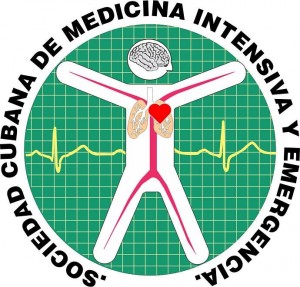Tratamiento del derrame pleural paraneumónico complicado en niños / Treatment of the complicated paraneumonic pleural effusion in children
Palabras clave:
Derrame pleural paraneumónico complicado, Drenaje pleural, Cirugía videotoracoscópica asistida / Complicated paraneumonic pleural effusion, Drainage pleural, Video-assisted thoracic surgeryResumen
Introducción: Los niños que presentan un derrame pleural paraneumónico complicado deben ser considerados críticamente enfermos. En la actualidad el tratamiento de esta afección es controversial, existiendo diferentes métodos de tratamientos según regiones, países y condiciones técnicas de los centros asistenciales.
Objetivo: Observar los resultados de la evolución en los pacientes con la aplicación de las diferentes modalidades de tratamiento.
Método: Se realizó una investigación observacional analítica de serie de casos realizada en 103 pacientes menores de 18 años que presentaron un derrame pleural paraneumónico complicado diagnosticados por la clínica, la radiografía y la ecografía en el periodo enero 1999 a enero 2014. Se confeccionaron tres grupos de estudios para hacer la comparación de sus resultados.
Resultados: La limpieza de la cavidad pleural mediante el uso de la cirugía videotoracoscópica asistida de forma precoz reduce la estadía hospitalaria y los días de uso de antibiótico, este procedimiento permite disminuir las complicaciones pulmonares, extrapulmonares y reintervenciones quirúrgicas. La mejoría radiológica es más rápida con la utilización de la cirugía videotoracoscópica.
Conclusiones: La cirugía videotoracoscópica es un método con el que se logran excelentes resultados, permite disminuir la estadía hospitalaria, las complicaciones pulmonares y extrapulmonares, así como la necesidad de reintervenciones quirúrgicas.
Abstract
Introduction: Children who suffer from complicated paraneumonic pleural effusion must be considered seriously ill. At present this treatment tends to be very controversial. There are different methods to treat according to regions, countries and technical conditions of the clinics.
Objective: To observe the results of the progress in patients applying different ways of treatment.
Method: An observational and analytic research was carried out in 103 patients under eighteen, these patients were diagnosed to suffer from complicated paraneumonic pleural effusion they were diagnosed by X-rays, echogram, and clinically from January 1999 to January 2014. They were divided into three different groups to compare their results.
Results: Early cleaning of the pleural cavity using the video thoracoscopy surgery can reduce the time that patients stay at the hospital and the use of antibiotics. This method helps reducing the pulmonary and extra-pulmonary complications, and having to undergo several operations. Improvement through radiology is a lot faster using video thoracoscopy surgery.
Conclusions: Excellent results are obtained when the video thoracoscopy surgery is used. This means shorter stay at the hospital; pulmonary and extra-pulmonary complications are reduced; as well as having to undergo operation.
Descargas
Citas
Hamm H, Light RW. Parapneu-monic effusion and empyema. Eur Respir J 1997; [Citado: 2013 Marzo 9] 10:1150–6. Disponible en: http://erj.ersjournals.com/content/10/5/1150
2. Segado A, Rodríguez F. Fisiopa-tología de la pleura: manejo del derrame pleural. En: Caminero JA, Fernández Fau L. Manual de Neumología y Cirugía Torácica. Madrid: SEPAR; 1998. p. 1671–84.
3. Coran GN, Scott A, Krummel T, Pramord SP, Jean Martin L. Infections and Deseases of the lungs, pleura and mediastinum. En: Paediatric Surgery .7.ed. USA: Elsevier, 2012. t. 2. pp. 885-880.
4. Cruz M, Crespo M, Brines J, Jiménez A. Enfermedades de la pleura. En: Compendio de pediatría. Ciudad de La Habana: Editorial Ciencias Médicas; 2006. p. 447–50.
5. Avansino JR, Goldman B, Sawin RS, Flum DR. Primary operative versus nonoperative therapy for pediatric empyema: a meta-analysis. Pediatrics. 2005; [Citado: 2013 Marzo 9] 115(6):1652-9. Disponible en: www.ncbi.nlm.nih.gov/pubmed/15930229
6. Metin M, Yeginsu A, Sayar A, Alzafer S, Solak O, Ozgul A, et al. Treatment of multiloculated empyema thoracis using minimally invasive methods. Singapore Med J. 2010 Mar; [Citado: 2010 Agosto 11]51(3):242-6 Disponible en: www.ncbi.nlm.nih.gov/pubmed/20428747
7. Gates RL, Hogan M, Weinstein S, Arca MJ. Drainage, fibrinolytics, or surgery: a comparison of treatment options in pediatric empyema. J Pediatr Surg 2004; [Citado: 2011 Julio 10] 39(11): 1638–42. Disponible en: www.ncbi.nlm.nih.gov/pubmed/15547825
8. Llombart CM, Chiner VE, Pastor EE, Andreu AL. Neumonía necrosante complicada con empiema de tórpida evolución. An Pediatr 2005; [Citado: 2010 Marzo 9]63: 79 – 80. Disponible en: www.sld.cu/galerias/doc/sitios/.../derrame_pleural_complicado_1_1.doc
9. Kent W, Kercher RJ, Attorri J, Hoover D, Morton D. Thoracoscopic Decortication as First-Line Therapy for Pediatric Parapneumonic Empyema. Chest 2000; [Citado: 2012 Abril 20]118: 24–7. Disponible en: www.gsdl.bvs.sld.cu/.../library
10. Shen YH, Hwang KP, Niu CK. Complicated parapneumonic effusion and empyema in children. J Microbiol Immunol Infect 2006; [Citado: 2010 Marzo 14] 39(6):483–8. Disponible en : www.ncbi.nlm.nih.gov/pubmed/17164951
11. Kalfa N, Allal H, Lopez M, Saguintaah M, Guibal MP, Sabatier-Laval E, et al. Thoracoscopy in pediatric pleural empyema: a prospective study of prognostic factors. J Pediatr Surg 2006; [Citado: 2013 Julio 10] 41(10):1732–7. Disponible en : http://www.ncbi.nlm.nih.gov/pubmed/17011279
12. Baranwal AK, Singh M, Marwaha RK, Kumar L. Empyema thoracis: a 10-year comparative review of hospitalized children from south Asia. Arch Dis Child 2003; [Citado: 2012 Marzo 8] 88(11):1009–14. Disponible en: www.ncbi.nlm.nih.gov/pubmed/14612371
13. Su-Ting T, Li Gates RL. Primary Operative Management for Pediatric Empyema. Arch Pediatr Adolesc Med. [En línea]. 2008 [Citado: 2012 Marzo 8]; 162(1): Disponible en: http://archpedi.amaassn.org/cgi/content/full/162/1/44.
14. Gates RL, Caniano DA, Hayes JR, Arca MJ. Does VATS provide optimal treatment of empyema in children? A systematic review. J Pediatr Surg 2004; [Citado: 2013 Marzo 10] 39 (3): 381–386. Disponible en: www.ncbi.nlm.nih.gov/pubmed/15017556
15. Manuel L, Marc N. Bronchopleural Fistulas: An Overview of the Problem with Special Focus on Endoscopic Management. Chest [En línea]. 2005 [Citado: 2013 Septiembre 20]; 128: Disponible en: http://www.ncbi.nlm.nih.gov/pubmed/16354867
16. Turk AE, Karanas YL, Cannon W. Stage closure of complicated broncho-pleural fistulas. Ann Plastic Surg 2000; 45:560–4
17. Marijke P, Kris B. Clinical practice: treatment of childhood empyema. Eur J Pediatr [En línea]. 2008 [Citado: 2010 Julio 2]. Disponible en: http://www.ncbi.nlm.nih.gov/pubmed
18. Eroglu E, Tekant G, Erdogan E, Kuruoglu S, Emir H, Sarimurat N, et al. Evolving Experience in the Management of Pleural Empyema. Original Article. Eur J Pediatr Surg 2004; [Citado: 2013 Marzo 9] 14: 75–8.Disponible en: http://europepmc.org/abstract/med/15185150
19. Eryigit H, Orki A, Kosar A, Akin O, Kiral H, Urek S. The role of video-assisted thoracoscopic surgery in the treatment of pleural empyema. Tuberk Toraks. [En línea]. 2007 [Citado: 2014 Abril 14]; 55(1): Disponible en: http://link.springer.com/article/10.1007/s00464-001-9028-3
20. Rockville D. Problems and Prevention: Chest Tube Insertion. Patient Safety: Findings in Action. AHRQ Publication No. 06-P024, September 2006. Agency for Health care Research and Quality. [Citado: 2012 Marzo 9] Disponible en: www.ahrq.gov/.../publications/.../chest-tube-insertio
21. Solaini L, Prusciano F, Bagioni P. Video-assisted thoracic surgery in the treatment of pleural empyema. J Surgical Endoscopy. Published online: [21 November 2006]. Disponible en: www.ncbi.nlm.nih.gov/pubmed/16368388
22. Yu-Chao L, Chih-Yen T, Wei Chen YL, Tsai Hung-Jen C, Wu-Huei H, Chuen-Ming S. An Urgent Problem of Aerobic Gram-Negative Pathogen Infection in Complicated Parapneumonic Effusions or Empyemas. Intern Med 2007 [Citado 2013 septiembre 22]; 46: [Aprox. 6p.]. Disponible en: www.ncbi.nlm.nih.gov/pubmed/17675765
23. Aydogan M, Aydogan A, Ozcan A, Tugay M, Gokalp AS, Arısoy ES. Intrapleural streptokinase treatment in children with empyema. Eur J Pediatr [En línea]. 2007 [Citado: 2013 septiembre 22]; [Aprox. 5p.]. Disponible en: http://www.ncbi.nlm.nih.gov/entrez/query/fcgi
24. Tassi GF, Davies RJ, Noppen M. Advanced techniques in medical thoracoscopy. Eur Respir J [En línea]. 2006 [Citado: 2012 marzo 3]; 28(5): [Aprox.8 p.]. Disponible en: http://www.ncbi.nlm.nih.gov/entrez/-query/fcgi
25. Wang JN, Yao CT, Yeh CN, Liu CC, Wu MH, Chuang HY, et al. Once-daily vs. twice-daily intrapleural urokinase treatment of complicated parapneumonic effusion in pediatric patients: A randomised, prospective study. Int J Clin Pract. 2006 [Citado: 2013 Abril 10]; 60(10):1225–30. Disponible en: www.ncbi.nlm.nih.gov/pubmed/16981967
26. Kurt BA, Winterhalter KM, Connors H, Betz BW, Winters JW. Therapy of parapneumonic effusions in children: video-assisted thoracoscopic surgery versus conventional thoraces-tomy drainage. Pediatrics. 2006; [Citado: 2014 Enero 5] 118(3): 547–53. Disponible en: http://pediatrics.aappublications.org/content/118/3/e547.short
27. Sonnappa S, Cohen G, Owens CM, Van Doorn C, Cairns J. Comparison of Urokinase and Video-assisted Thoracoscopic Surgery for Treatment of Childhood Empyema. Am J Respir Crit Care Med. 2006; [Citado: 2013 Marzo 9] 174(2):221–7. Disponible en: http://www.atsjournals.org/doi/abs/10.1164/rccm.200601-027OC#.VpZz1Sd2dkg
28. Gomez P, Consuegra E. Derrame pleural. En: Ruza Tarrio F. Tratado de Cuidados Intensivos Pediátricos. 3. ed. Madrid: Ediciones Norma – Capitel; 2003. p. 796–07. VI.







